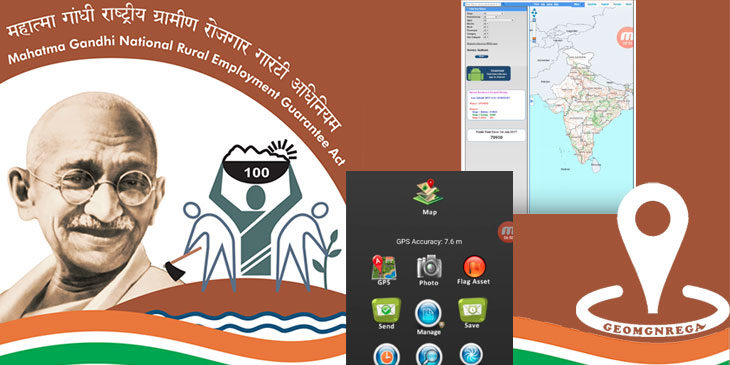Originally published on GI-ACE
On 24 September 2019, the Centre for Policy Research (CPR), in association with the Global Integrity Anti-Corruption Evidence (GI-ACE) research programme, hosted a workshop on ‘Audit and Anti-Corruption Measures in India.’ The workshop brought together government officials, policy activists, and researchers to deliberate on finding possible complementarities between social audits and top-down audits, with a special focus on two large public works programmes in India—the Mahatma Gandhi National Rural Employment Guarantee Act (MGNREGA) and the Pradhan Mantri Gram Sadak Yojana (PMGSY). This blog highlights some of the important themes that emerged from the workshop.
The first theme that emerged was around the use of technological interventions to reduce leakages in the two programmes (e.g., wage siphoning, creation of fake beneficiaries, and assets not getting created in the case of MGNREGA; and road building and quality in the case of PMGSY).
- The Ministry of Rural Development (MoRD) has already rolled out the Direct Benefit Transfer (DBT) in most states, whereby beneficiaries get paid directly from the central government, breaking the chain of intermediaries who can engage in rent-seeking. In addition, DBT ensures that whenever funds are transferred to the lowest level (village), there is an immediate verification of program expenditure, which then leads to lower levels of leakages. This was verified in a study in Bihar by Banerjee, et. al. (2019), in which it was found that DBT led to a 17 percent reduction in expenditure without concomitant decrease in the number of beneficiaries, wages, or assets created.
- Another mainstay is geotagging, an important technological intervention to verify the number and quality of finished assets. The Ministry is working to make publicly available the data on road maintenance mapped through geotagging and the Management Information System (MIS), thereby making it a powerful tool for social audits. Another area of improvement by MoRD is finding better ways of empowering citizen monitoring and building better mechanisms to track complaints.
What have been the responses to the aforementioned technological interventions? We heard from the central audit office in India, as well as from social audits activists and researchers:
- In terms of centralised audits, the main message was on the importance of maintaining good data, which would enhance the scope of top-down audits (e.g., by correlating data sets across various fields—something China has done to better combat air pollution).
- Anjor Bhaskar, a faculty member at Azim Premji University, drew on his fieldwork experiences in Jharkhand to illustrate the role social audits play as grievance redressal mechanisms when technological interventions create a plethora of new problems. For example, there is anecdotal evidence of starvation deaths coming out of Jharkhand due to insufficient state capacity to handle new technologies.
- Rajendran Narayanan, also at Azim Premji University, provided more detailed case studies, expressing what he termed his “wariness about the techno-utopian way of making schemes efficient.” An interesting observation that Narayanan brought up was the use of messaging services like WhatsApp by frontline bureaucrats to convey decisions, which obfuscates accessibility and erases trails, negating the possibility of later citizens appeal.
A second point that emerged from the discussions was the availability of multiple rich government datasets that are not available in the public domain, most obviously those containing Action Taken Reports (ATR).
- Studying Gram Panchayat Development Plans (GPDP), for example, could make for better understanding the workings of the panchayat (village government), as well as its priorities.
- Social Audit reports also have great potential to be used in complement to Comptroller and Auditor General audit reports—a practice already in place in Maharashtra and Andhra Pradesh. While highlighting the importance of an audit as a mechanism for spreading awareness and demanding accountability, audits also are rich sources of qualitative data that can explain the ‘who, why, and how’ of scheme operations.
A final takeaway from the workshop was the importance of building state capacity at the village level. Anecdotally, the states that have been the most successful in implementing MGNREGA have been those with the most efficient local machinery. This point was echoed by a number of participants with field experience.
- Anindita Adhikari, a Ph.D student working on social audits, observed that panchayats were being kept out of the process of social audits, pointing to the need for giving them more formal responsibility when it comes to social audits.
- CPR President and Chief Executive Yamini Aiyar underscored the importance of the need for enhancing capacities of the village governing bodies (panchayats) while including the government as a part of the social audit governance which could be a rich source of feedback to judge the workings of their technological interventions.
- This point was echoed by Karan Nagpal, an economist at the consulting group IDInsight, who drew upon the firm’s groundwork experience to emphasize the need to build capacity at the grassroots level in order to overcome the difficulties that arise from a technological intervention.







